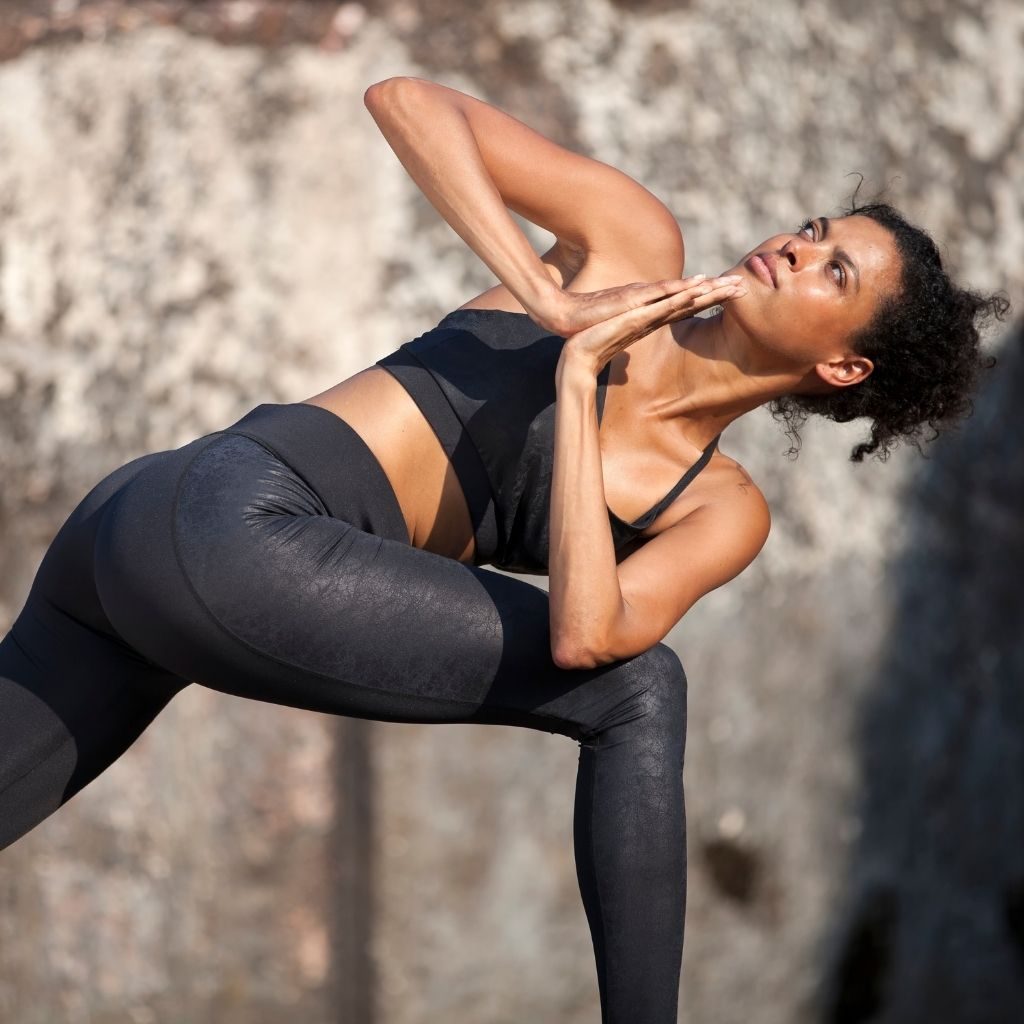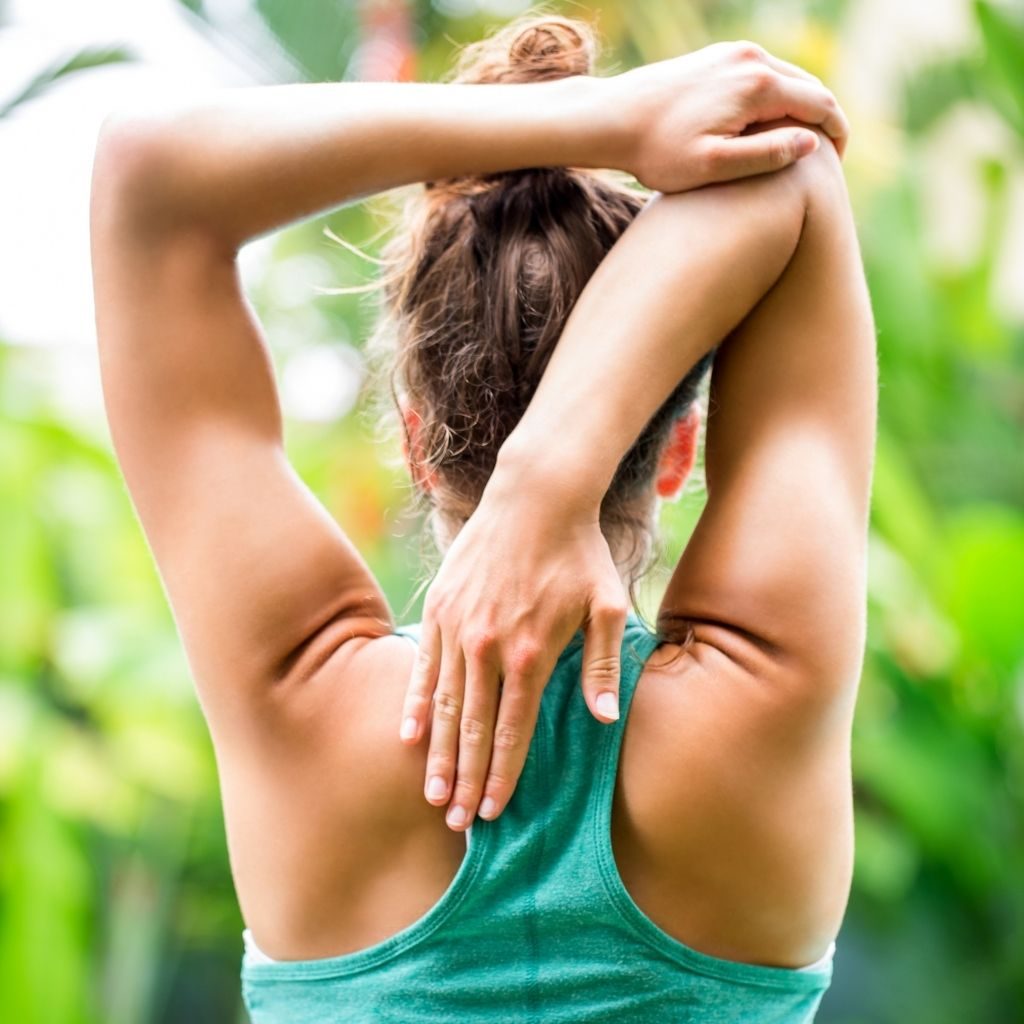Is it ok to practice yoga with sore muscles?
We have all experienced sore muscles after exercising. Those times when we pushed our bodies as far as we could and later had to deal with the consequences.
In most cases, yes, you can do yoga when you are feeling sore. In fact, rolling out your mat can actually be the first step to bringing your muscles the relief they need.
Of course, each case should be treated individually; after all, each body is different, and each sore is unique. If your body is experiencing soreness, respect it. That discomfort is real and shouldn’t be ignored.
A lighter-than-usual yoga session may be what you need to soothe some of those sore parts. You can do several things to begin the healing process, including a series of poses that ought to stretch those aching muscles.
Let’s look at some of the options we have, in and out of the studio.

What does yoga do to your muscles if practiced correctly?
If you are doing things right, your yoga practice should push and stretch your muscles to their limits. If you aren’t used to bringing your body to that edge, you will most likely become sore afterward. Even experienced yogis can feel sore after pushing their bodies far enough.
When your muscles are sore from exercising, they are in a constant state of tension. As a response to performing at a high level, the body produces a natural chemical called cortisol, the main responsible for all that tension.
At this stage, there are two things that your muscles need: oxygen and to be stretched. An excellent way to provide those two elements is through a combination of deep and expansive breathing with slow, intentional, and self-aware stretching, or, in other words, yoga.
Practicing yoga has also shown to decrease cortisol production, thus reducing tension drastically.

Should your muscles stop aching after a yoga practice?
Different poses will stretch different muscle sets, bringing sore relief; and potentially even eliminating the pain.
As we mentioned previously, most muscle sores are tension-based. Easing that tension eases the sore.
Yoga will stretch the muscle in need of stretching and deliver oxygen to it through the practice’s respirational process.
Additionally, while practicing Yoga, your body’s chemistry changes. Less cortisol means less tension, and again, less pain.
What else can you do to get rid of muscle aches after yoga?
Remember, that sore was born out of your pushing muscles to the extent that you weren’t pushing before. If you did it right, sore muscles are a good sign. It means you pushed yourself the right way.
There are a few things that you can do to address the sore that won’t go away, even after a lighter session.
Drink plenty of water
Hydration is an excellent way for the body to recover and to reduce muscle inflammation, so drink plenty of water (and we do mean water, not Gatorade or any sports drinks of sorts)
Have a good rest
Your muscles are tired from the workout. The bottom line, they need to rest to restore themselves. So, plenty of beauty sleep is widely recommended.
Continue to exercise
Consistency is key. The more prepared your muscles are to push it to the limit, the more comfortable they will be with it; thus, the less sore they will cause you.
Find your own pace. You don’t need to exercise if you have an excruciating sore body but get back to it as soon as you can. You can always exercise with less intensity, taking your sores into account.
Keep a healthy diet
Your diet has a significant impact on your body and its recovery process. Protein is very effective in repairing and building muscle. Carbohydrates also help in a faster recovery.
Continue stretching
The stretching motion increases your blood flow, which helps to alleviate soreness.
Take a hot bath
A hot bath can assist in your speedy recovery.
Aside from the heat, which relaxes the tense muscles, the floatation of the body allows it to be in a still state of healing.
These are general tips that should work for a variety of muscle sores.
The aim is to release tension, where there is more tension than wanted.
Do you need rest days from yoga?
Again, it depends. If you are just starting out and after a session, your body is feeling sore, firstly, congratulations – that is how you are supposed to feel, but in that case, a rest day might be a good idea. It will allow for your muscles to heal, to be ready for the next class.
The more you practice, the more ready you will be for your next session.
Your body will most likely become accustomed to pushing itself to its limit, and so the soreness should become less frequent.
When that time comes, you may choose to skip a rest day here and there. It is up to you and how you feel your body responds to what you are putting it through.
Best yoga poses for sore muscles
Take your soreness into account and find poses that you feel helps alleviate it. There are a series of poses that you can do that will target specific muscle sores.
Here are a few poses that can help relieve some of those aches:
1. Triangle Pose – Full body stretch
Pay attention to your alignment and feel that long side stretch as you look up. Remember to do both sides to keep your body balanced.
This asana stretches your entire side, your legs, and hamstrings, as well as giving your hips and shoulder a little push.
2. Child’s Pose – Stretch your arms, entire back, legs, and ankles
Aside from being very calming and easy to do, this pose will stretch everything, from your arms to your ankles.
3. Seated Spinal Twist – Stretch your back and sides
As you inhale, attempt to lengthen your spine as much as possible, as if you were trying to grow taller. This helps to stretch the spine, as well as sides, hips, and legs.
4. Standing wide-legged forward fold
Fantastic for stretching your leg muscles and lower back. Remember to find your body limit.
Keep your back flat throughout the pose and allow for your muscles to unbend.
5. Low Lunge – Stretch your entire lower body
Suitable for quads and leg muscle sores. Typically the type of sore that shows up after a long run.
You can stay in this pose for as long as you want.
6. Cat-Cow – Back and abdominal stretches and meditative state of mind
Great stretch for your back and abdominal aches. Additionally, you can make this pose into a moving meditation. Much like any pose where you can allow yourself to get into a meditative state, it can positively impact relieving muscle soreness.
A meditative mind will induce your body to reduce cortisol production, which means less tension in your muscles, subsequently meaning less overall pain.
7. Reclined Bound Angle pose – Meditation, hips, and legs
Another great way to get into a pose and meditate at the same time. It also is beneficial against sore hips and tights.
8. Reclined Figure-Four Stretch – Legs and quads
This may seem somewhat painful at first, but once you have breathed it in, you will feel your muscle releasing all that tension. This is a great pose to stretch out your legs, as well as your quads.
9. Cobra pose – Abdominal and lower back stretches
Especially good for abdominal and lower back sores. Allow yourself to gently stretch your midsection as much as you can. You can stay in this position for as long as you like.
10. Standing Forward Fold – Legs and back
Standing forward fold is a great way to stretch out the back of your legs and provide your back some relief.
While standing, our shoulders, arms, and head weigh on our backs. In this pose, you relieve your back from all that heavy lifting.
It is vital to reiterate; each sore is very individual. Know your body, your sores and apply your binding judgment on how to deal with them.
In conclusion
You do you. You know your sores better than anyone, so only you can tell what is tolerable and what is not. If you look essential to remedy your soreness, yoga is an alternative, a combination of deep breaths driving oxygen into those tense muscles being stretched. Great!
Use your discretion. Choose a selection of poses that address your aches. Remember, you are trying to decrease the sore, not increase it.
Outside of the studio, keep hydrated, eat well and rest; And most importantly, keep on at it.
Read also:




